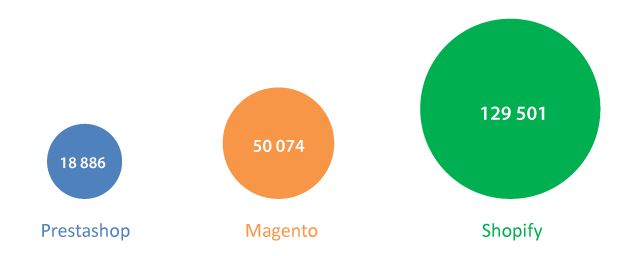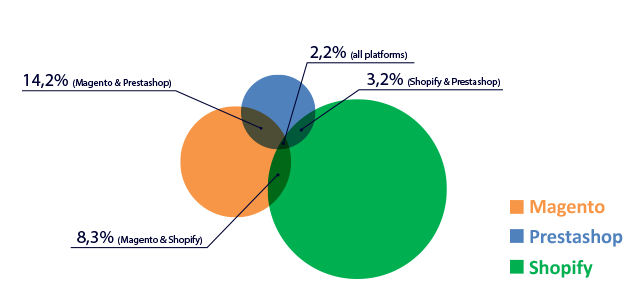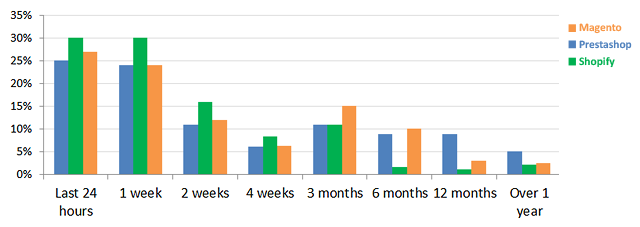Minimalism consists of reducing a website design to its crucial components. Minimalism is ruling the internet these days. Most of the websites, even the small ones, now use a minimalist web design. You may have seen countless popular websites with minimalist esthetics, even if you have never designed a site in such away. Such websites with a minimalist design feature fewer colors, textures, links, font style, clickable buttons, images, menus, and other useful elements than their equivalents.
Perks of Minimalist Web Design
If you’re thinking about adopting a minimalist web design, then you might be pondering what perks it offers. Switching to a new web design needs smart work, and choosing a minimalist web design is a smart move. However, incorporating minimalism can improvise your website’s ranking and its success level in countless meaningful ways.
Fewer Errors
A minimalist web design will guard your site against errors. Errors are usually ascribed to bad source code. So, If a visual component isn’t coded properly, it may provoke an error message alert when requested by users. For instance, bad links can result in a 404 error if they point to a null URL. Whereas images may fail to load if they have an invalid address.
By using a minimalist web design, your website will have only necessary visual elements. Thus, there’re fewer chances for errors to occur. Site visitors will be able to navigate across your website without facing any error. So in turn, you’ll foster a more faithful as well as satisfied audience.
Quick Loading Time
A website may load in the blink of an eye if it uses a minimalist web design. Loading time is directly proportional to the number of visual elements. The more visual items a page has, the more time it will take for loading. When a user loads a page, the entire page’s visual elements take time to download. Thus, minimalism ensures that your web pages are free of unnecessary visual aspects that would otherwise surge their loading time.
Lower Bounce Rate
A minimalist web design can retain your website’s bounce rate under control as it offers a quick loading time. Bounce rate is a metric for the percentage of users who leave after visiting a single page. Some users may visit half-dozen pages before leaving. However, others may visit only a single page and then leave. Users who fall under the latter category will add to a higher bounce rate.
You can optimize your website for a minimum bounce rate by using a minimalist web design. As per econsultancy.com, two in five users will quit a site if it takes more than 3 seconds to load. Thus, with fewer visual items, users won’t have to wait for your site to load. They’ll also be able to navigate easily across web pages, thereby lowering the bounce rate.
Easy Maintenance
Compared to complex types of web design, a simple and minimalist web design is much easier to maintain. It usually needs less or no upkeep, in fact. Even if you update your website’s CMS as well as its server, your site should proceed to work flawlessly. All credit goes to its minimalist web design.
However, a complex web design with more visual items will make it hectic to maintain your site. You may perform a regular CMS or server update, only for it to break some visual elements. You’ll then have to detect and fix the broken elements. Thus, if you’re tired of such issues after periodic updates, you should opt for a minimalist web design.
Better Multi-Device Compatibility
A minimalist web device can optimize your website for multi-device compatibility. Users today are no longer confined to use a typical desktop PC or laptop. Other portable mobile devices such as smartphones, tablets, smart wearables, and other infotainment systems can connect to the web. Different devices use diverse technologies to load as well as to display website content. Your website might be compatible with PCs as well as laptops. But, when a user attempts to access it on a mobile device, they may face compatibility issues. Some of your site’s elements may load outside of the viewport, whereas others may load in a minute size that makes them impossible to view on a mobile screen.
Minimalist web design is a prerequisite for better multi-device compatibility. It will widen the range of devices with which your website is compatible. With a minimalist web design, your website will only have basic as well as necessary elements. Thus, your website will be compatible with a variety of devices.
Higher Search Engine Rankings
Another potential asset of using minimalist web design is higher rankings in search engines. Google and other search engines use a site’s loading time as a ranking signal. As a website with minimalist web design loads faster, so it will align better with search engine ranking algorithms.
A minimalist web design can also allow your website to engage more backlinks. While visiting your site, other webmasters won’t be fascinated by its visual elements. Instead, they will focus solely on your site’s content, which may force them to link to your website after leaving it. More backlinks help to improve your website’s rankings. It’s a fact that users will stay longer if your website uses minimalist principles. They’ll surely navigate across pages, and they’ll spend more time viewing your content. As your website’s usual session time increases, so will the ranking authority.
Whether you’re going to launch a new website, or you’re just looking to give your existing site an overdue makeover, you should always consider a minimalist web design. Besides being easy to create as well as implement, it offers a diversity of benefits such as fast loading time, fewer bugs, a lower bounce rate, less care, better multi-device compatibility, and SEO friendliness. At Clap Creative a Magento development company, we can help you with the minimalist web design in Los Angeles for your website.





